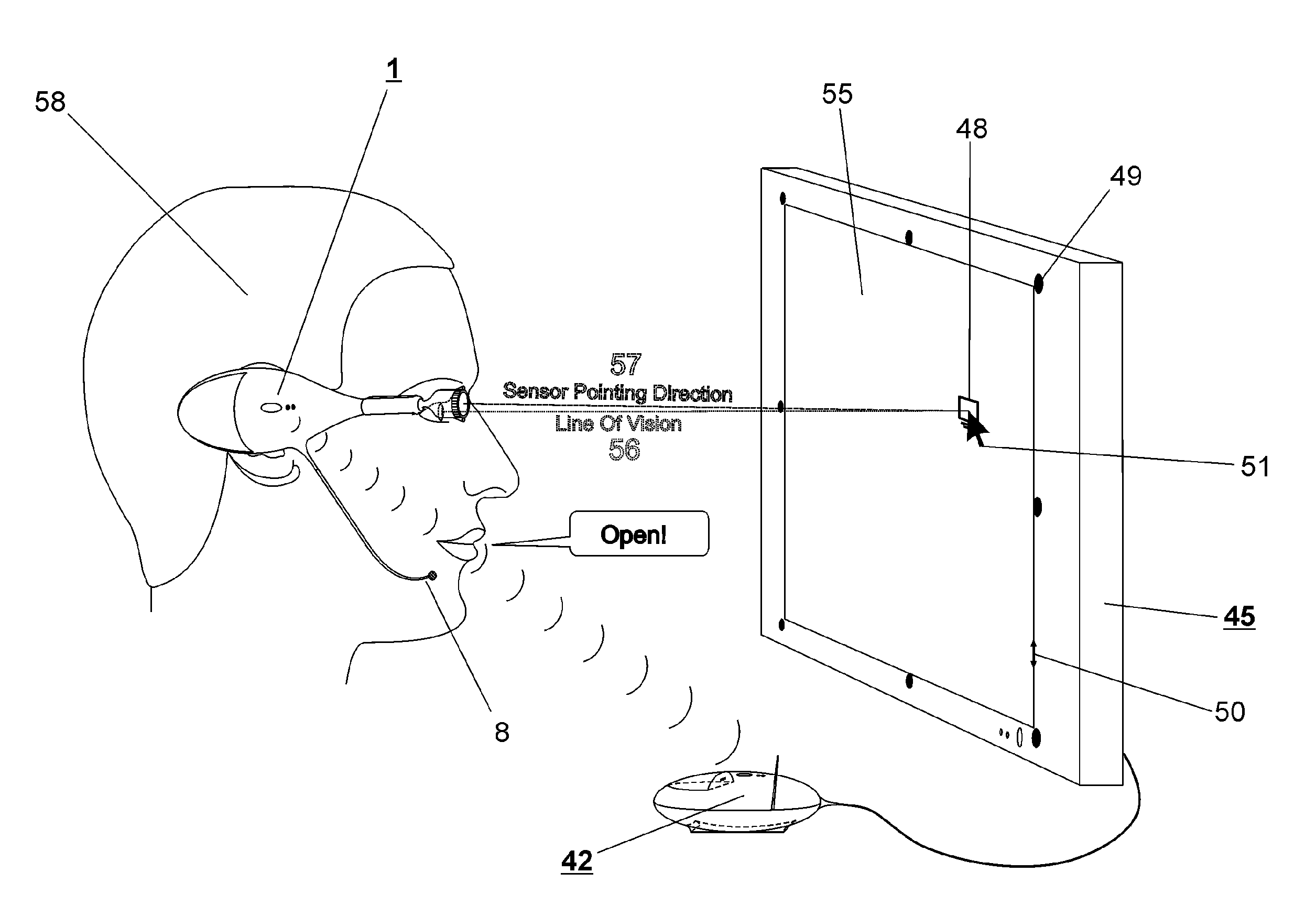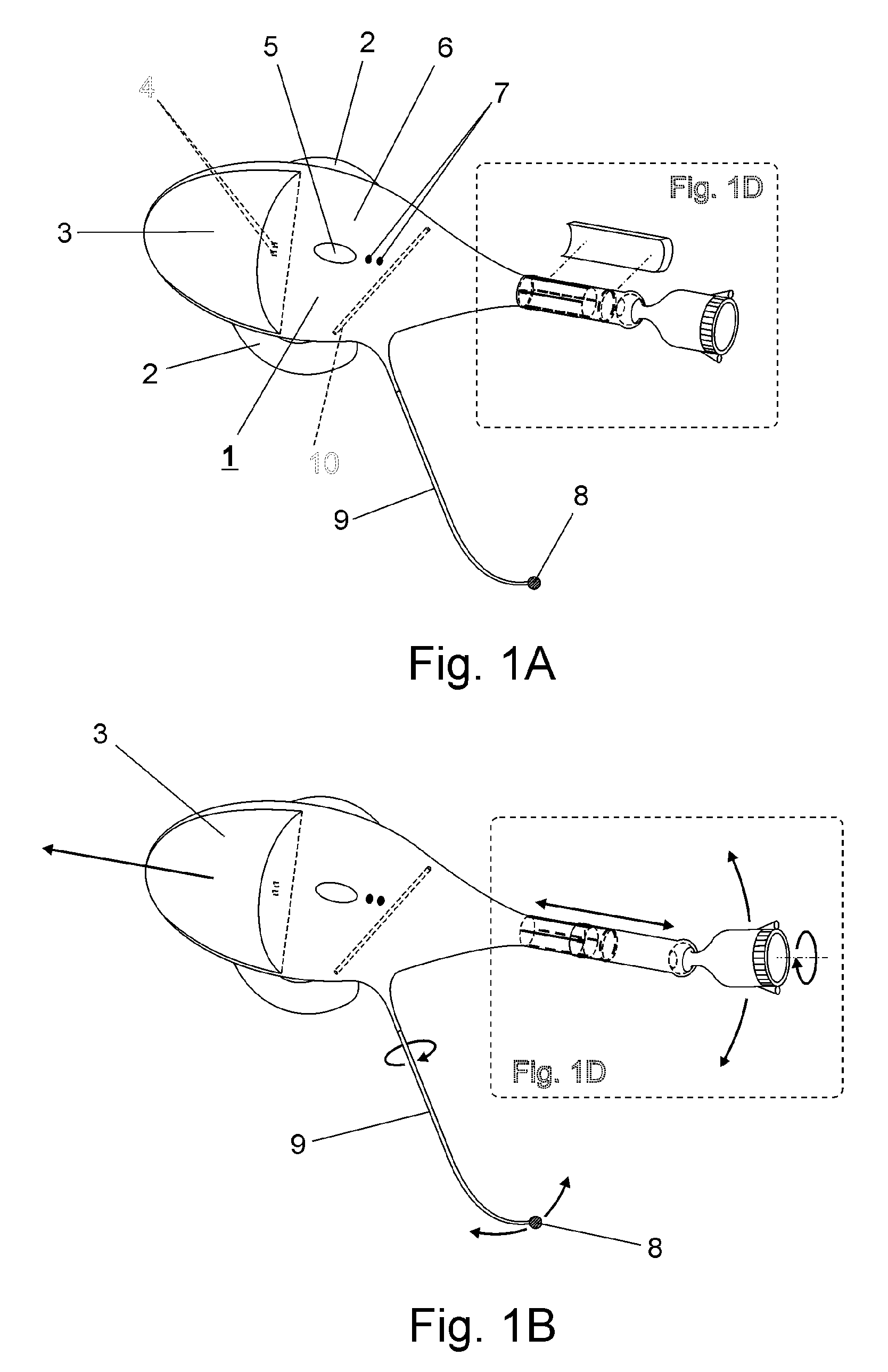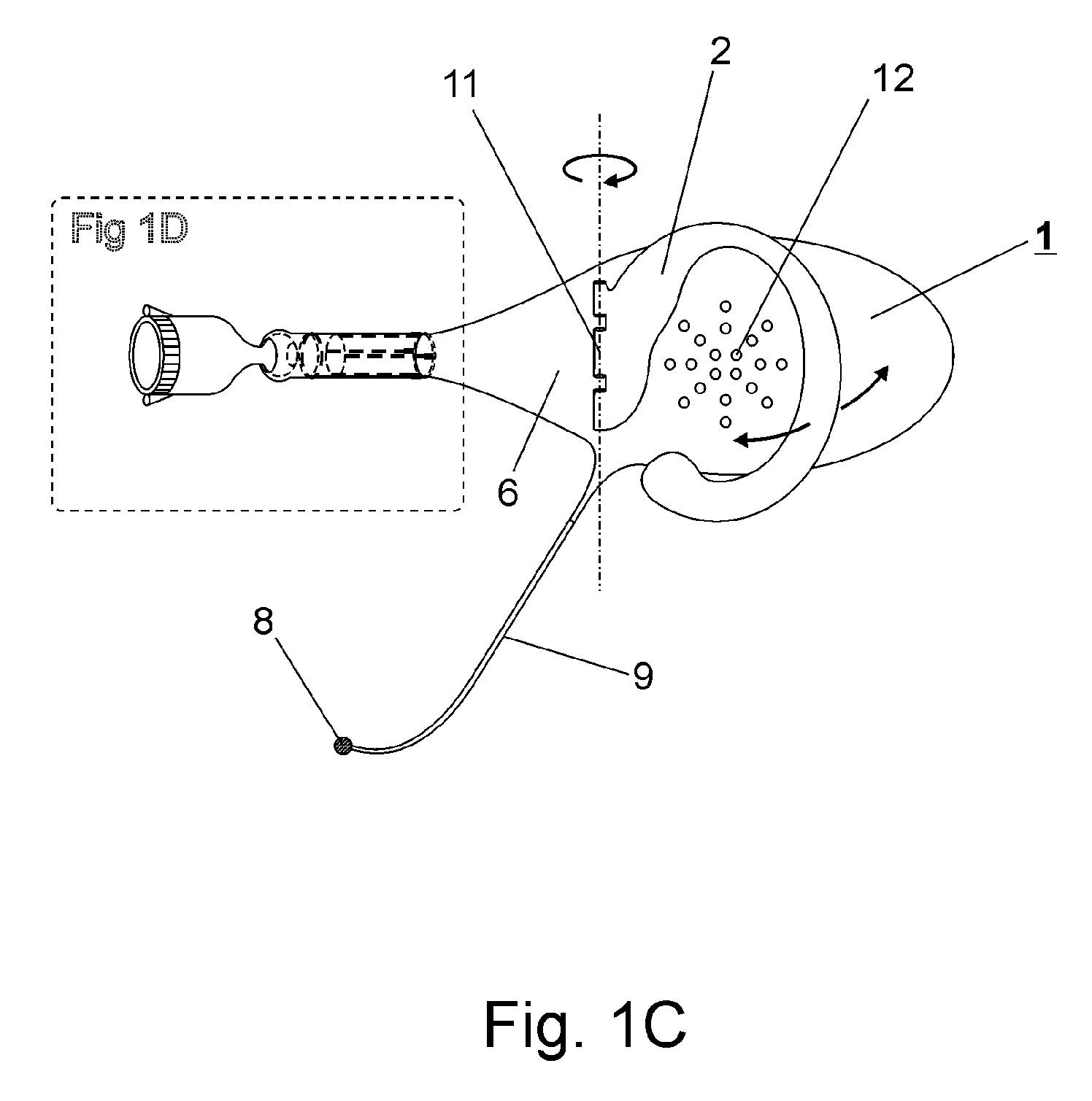Method of controlling a machine connected to a display by line of vision
a technology of line of vision and display, which is applied in the direction of instruments, computing, electric digital data processing, etc., can solve the problems of inefficiency of mouse and keyboard use, mouse is not suited as text input device, and the patent does not disclose the method of hands-free pointer control (using buttons)
- Summary
- Abstract
- Description
- Claims
- Application Information
AI Technical Summary
Benefits of technology
Problems solved by technology
Method used
Image
Examples
Embodiment Construction
—FIGS. 1, 2, 3, 5—PREFERRED EMBODIMENT
[0074] FIGS. 1A-1D:
[0075]FIGS. 1A to 1D show a preferred embodiment of the form factor of the wearable apparatus in different perspective views. FIG. 1A shows the main body 6 containing electronic components and a rechargeable battery 3 inserted into the main body. The entire case of the apparatus is plastic or another lightweight material. The battery is detachable from the main body as indicated by the arrow in FIG. 1B and when inserted, it is connected to the electronic circuitry inside the main case over two contacts 4.
[0076] A C-shaped ear clip 2 is attached to the main body, best shown in FIG. 1C. The ear clip consists of a flexible wire, coated in a soft material like rubber or plastic and its shape is designed to fit around a human ear to hold the main body in a stable position next to the ear. It can be manipulated to fit an individual ear.
[0077]FIG. 1D shows a more detailed, exploded view of the front end of the preferred embodiment...
PUM
 Login to View More
Login to View More Abstract
Description
Claims
Application Information
 Login to View More
Login to View More - R&D
- Intellectual Property
- Life Sciences
- Materials
- Tech Scout
- Unparalleled Data Quality
- Higher Quality Content
- 60% Fewer Hallucinations
Browse by: Latest US Patents, China's latest patents, Technical Efficacy Thesaurus, Application Domain, Technology Topic, Popular Technical Reports.
© 2025 PatSnap. All rights reserved.Legal|Privacy policy|Modern Slavery Act Transparency Statement|Sitemap|About US| Contact US: help@patsnap.com



